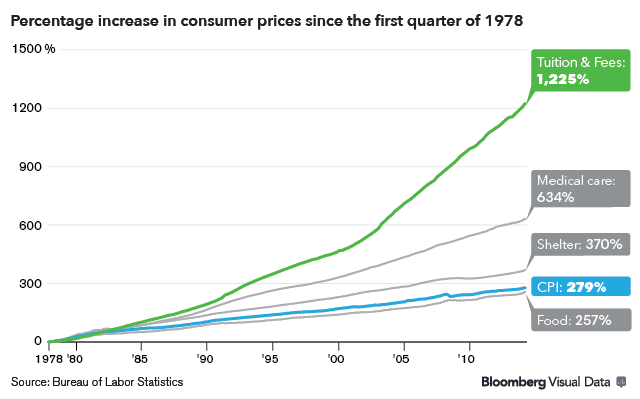Getting a college education wasn’t always this expensive. American universities have seen an exponential rise in tuition over the past 50 years, that can’t be accounted for by inflation. Prior to the 1950s, college was relegated to the wealthy elite. It was World War II that made it accessible to everyone else. For about 20 years, federal and state governments were doing everything they could to expand education, while making it affordable and accessible to all. However, just like everything else, it slowly became about the money.
Servicemen’s Readjustment Act of 1944
Prior to World War II, a college education was nearly impossible to acquire for much of the working class. It wasn’t until President Franklin D. Roosevelt signed into law the Servicemen’s Readjustment Act of 1944, more commonly known as the GI Bill, that getting a college education became attainable for those without means. While the Bill also provided WWII veterans with funds for unemployment insurance and housing, its most utilized and famous value was for an affordable college education.
Originally, the Bill was predicted to provide around 800,000 veterans with education benefits – it went on to garner 10 times that number, with just under 8 million veterans enrolling into the program. With a booming post-war economy and large amounts of federal money coming in, states embraced the idea of the GI Bill and fought to keep costs low. The states focused on expanding infrastructure to accommodate this student influx, while the federal government was focused on finding ways to help families pay for college. One of its many successful creations was the National Defense Student Loan program, which later became the Federal Perkins Loan program, and opened the doors for civilians just as the GI Bill did for veterans. At the end of the 1950’s, the gates to an affordable college education were wide open.
Higher Education Act of 1965
The 1960’s opened the gates even wider. While the country was experiencing significant social reform, with the Civil Rights Movement taking center stage, ratification of the pivotal Higher Education Act of 1965 provided further college access to the middle-class, especially to women and minorities. The bill provided tremendous federal support to state colleges and universities, in the form of grants, loans and programs to financially assist students with post-secondary education.
So, for about 20 years, during the 1950’s and 1960’s, the federal government opened the education door to the middle-class and provided financial support to the states, who focused on expanding infrastructure, facilities and programs to accommodate the increased amounts of students coming through that door.
Economic Downtown of the 1970’s
Then, something unexpected happened in the 1970’s. The country experienced an incredibly severe economic downtown caused by crippling inflation, stagnant economic growth and an oil embargo that added fuel to the fire. During this time, college tuition rates climbed higher than the inflation rate, federal loans began being replaced by private loans that were heavily subsidized by the government, and household income decreased significantly, causing families to borrow money for college more than before. And amidst this economic turmoil, the federal government began cutting public education spending, reigning in funding to state institutions. With state schools losing their federal funding, they had to turn elsewhere to recoup the costs – they chose to steadily increase tuition rates. There were also many colleges that chose to capitalize on the perception that a more expensive education equates to a better education.

